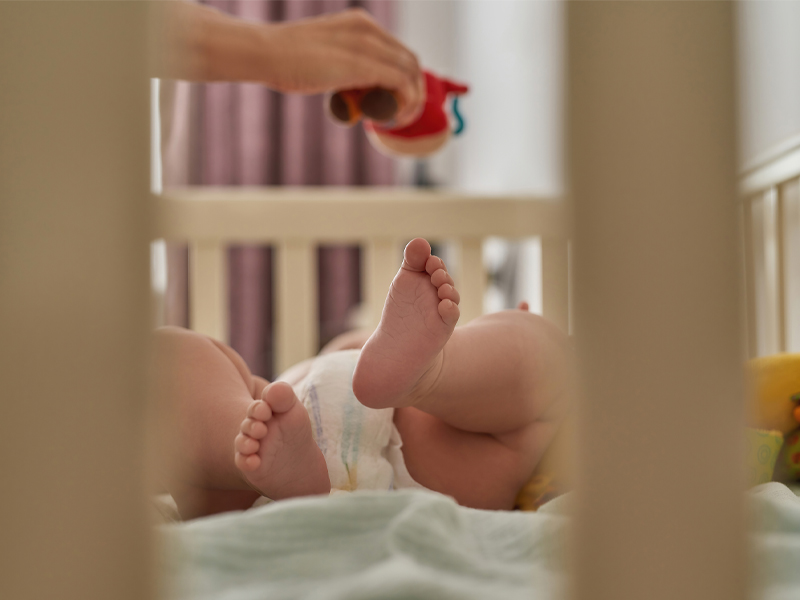As an overly concerned parent, you’ve successfully baby-proofed your whole home. Every piece of furniture has protective padding attached to it, every bottom cabinet has been fastened, and every book on child safety, in general, has been devoured line by line. As it turns out, there may be one more important thing to cross off your list: identifying the contents of your baby’s crib mattress and whether they might pose a danger to your infant.
Fiberglass, for example, has become the favored material for meeting required flammability standards since it is inexpensive, easy to produce, and widely accessible. Nonetheless, fiberglass may be harmful to your baby’s health since it can irritate the eyes, develop rashes, cause discomfort in the nose or throat, and exacerbate bronchitis and asthma symptoms. In fact, sufficient harm has been caused to warrant filing a class-action lawsuit against Zinus, Inc., which uses glass fibers as a fire barrier material in the manufacture of bed-in-the-box mattresses.
Is Fiberglass in Crib Mattresses Safe?
Babies are exposed to chemical emissions from crib mattresses up close, extensively, and over time. The bulk of each day (about 50 percent to 60 percent) is spent sleeping, with infants lying directly on the mattress, breathing in, and absorbing whatever is contained inside the mattress during their most vulnerable developmental months. Fiberglass, which is embedded beneath or woven into the inner cover of mattresses, acts as a flame retardant when subjected to extreme heat. When light passes over the glass shards, the fibers catch a glint that becomes apparent to the human eye.
It has been determined by the National Toxicology Program (NTP), an inter-agency program run by the United States Department of Health and Human Services, that fiberglass is a “probable carcinogen.” In fact, in 2016, the latter released the 14th report on carcinogens, that now includes formaldehyde, which can be found in small amounts in fiberglass. This classification indicates some evidence that fiberglass causes cancer but no clear proof of an impact on people. However, further investigations are necessary to determine its carcinogenic risk.
Never Remove the Mattress’s Zippable Cover Without Knowing Its Contents
Removing the mattresses’ top cover enables the glass fibers to be exposed, allowing them to be instantly scattered into the surrounding environment. A large number of glass particles in fiberglass may cause discomfort and even severe responses in people exposed. Due to the infant’s considerably greater air volume per body weight, this exposure is amplified by up to ten times.
Worst of all, once fiberglass fragments have escaped from your mattress, it is almost impossible to remove them completely. With the assistance of the HVAC system, glass fragments may quickly travel throughout the house, polluting the air, carpet, furniture, clothes, and practically everything. So, to avoid making the expensive and perhaps dangerous error that others have made, first ensure that you know your mattresses’ contents.
Always Read the Labels When Choosing a Crib Mattress for Your Nursery
Choosing an organic crib mattress is one of the most important decisions you can make since it is one of the surfaces that babies and toddlers have the most contact with daily. This is why, without a doubt, if you are going to invest in a “clean” and “non-toxic” crib mattress, it should be organic. A mattress is deemed “green” if it contains few chemicals, synthetics, or pesticides.
Although there are no genuine organic mattresses since the bedding industry presently lacks a government organic certification requirement, it is feasible to find an eco-friendly and healthful mattress.
Related
Toxic Free Future’s Fight to End “Forever Chemicals”
October is National Breast Cancer Awareness Month
Recycle, Reduce, Reuse with Kids


